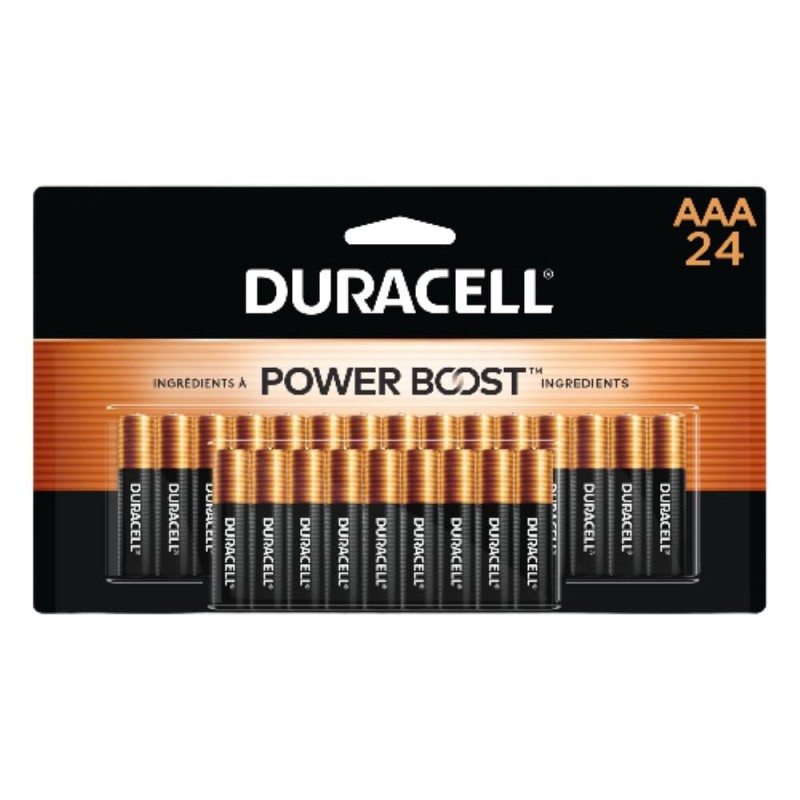Batteries are an integral part of modern life, powering everything from smartphones to electric vehicles. However, many people are unaware of the underlying science that enables batteries to store and release energy. When you press the power button on your device, you might not consider how the battery converts chemical energy into electrical energy to keep your world connected. This remarkable transformation happens within the battery’s components, including electrodes, electrolytes, and separators. By understanding how batteries work, we can better appreciate their role in our daily lives and their significance in addressing contemporary energy challenges. This article aims to delve deeply into the functioning of batteries, covering the different types, their components, how they charge and discharge, safety considerations, and future advancements in battery technology. So, let’s explore the fascinating world of batteries and see how they power our modern existence.
What Is a Battery?
Definition and Purpose
A battery is a device that stores chemical energy and converts it into electrical energy through electrochemical reactions. Batteries power a variety of applications, from small electronics to large-scale energy systems. The primary purpose of a battery is to provide a portable and reliable energy source, allowing devices to operate independently of external power sources.
Batteries can be categorized into two main types: primary (non-rechargeable) and secondary (rechargeable). Primary batteries, such as alkaline cells, are designed for single use, while secondary batteries, like lithium-ion batteries, can be recharged multiple times. Both types harness the principles of chemistry and physics to deliver energy efficiently, playing a crucial role in modern technology.
Historical Background
The concept of batteries dates back to ancient civilizations. The earliest recorded battery-like device, known as the Baghdad Battery, was discovered in Iraq and is believed to have been used for electroplating. However, the first true battery, the voltaic pile, was developed by Alessandro Volta in 1800. This revolutionary invention marked the beginning of practical electricity generation and storage.
Since then, battery technology has evolved significantly. New materials and designs have been introduced to improve efficiency, capacity, and safety. As our reliance on portable energy sources continues to grow, understanding how batteries work is more critical than ever.
The Components of a Battery
To grasp how batteries work, it’s essential to become familiar with their components and how they interact. A typical battery consists of the following parts:
Anode
The anode is the negative electrode of a battery where oxidation occurs. During discharge, the anode gives up electrons, which flow through an external circuit, providing electrical energy to power devices. Materials commonly used for anodes include zinc in alkaline batteries and graphite in lithium-ion batteries.
Cathode
The cathode serves as the positive electrode of a battery where reduction takes place. Electrons flow into the cathode, reacting with ions from the electrolyte. The choice of materials for the cathode varies depending on the battery type—in lithium-ion batteries, compounds like lithium cobalt oxide are prevalent.
Electrolyte
The electrolyte is a chemical medium that facilitates the flow of ions between the anode and cathode, enabling the electrochemical reactions necessary for energy transfer. Electrolytes can be liquid, gel-like, or solid, and their composition significantly affects a battery’s performance.
Separator
The separator is a porous membrane that prevents direct contact between the anode and cathode while allowing ions to pass through. This vital component helps to prevent short-circuiting and ensures the safe operation of the battery.
Current Collectors
Current collectors are conductive materials (usually made of metal) that facilitate the flow of electrons in and out of the electrodes. They connect the anode and cathode to the external circuit, enabling the battery to deliver electric power to devices.
How Batteries Work: The Electrochemical Process
Charging and Discharging
The operation of a battery revolves around the processes of charging and discharging. When a battery discharges energy, an electrochemical reaction occurs, allowing the battery to deliver power to a device.
- Discharging Process
During discharge, the anode undergoes oxidation, releasing electrons and generating positive ions. These electrons travel through the external circuit, providing energy to the connected device. Meanwhile, the positive ions move through the electrolyte toward the cathode, where they participate in a reduction reaction. - Charging Process
In rechargeable batteries, charging involves applying an external voltage to reverse the electrochemical reactions. During charging, external power supplies energy to push electrons back into the battery, restoring the anode and cathode to their original states. This process allows the battery to store energy for future use.
The Role of Electrochemical Reactions
The efficiency and capacity of a battery heavily depend on the electrochemical reactions occurring within it. These reactions are governed by principles of chemistry, including oxidation-reduction (redox) reactions. By understanding these reactions, we can optimize battery design for various applications.
- Oxidation Reaction: Involves the loss of electrons at the anode. For example, in a lithium-ion battery, lithium atoms at the anode lose electrons to become lithium ions, which store energy.
- Reduction Reaction: Involves the gain of electrons at the cathode. In the case of lithium cobalt oxide, lithium ions combine with electrons to form lithium atoms, allowing energy storage.
Types of Batteries and Their Applications
Batteries come in various types, each suited to different applications and performance requirements. Understanding these types is crucial for selecting the right battery for specific needs.
Alkaline Batteries
Alkaline batteries are primary batteries commonly used in household devices. They have a high energy density and longer shelf life compared to older carbon-zinc batteries. Alkaline batteries are typically non-rechargeable and are found in applications like remote controls, flashlights, and toys.
Lithium-Ion Batteries
Lithium-ion batteries are rechargeable batteries widely used in smartphones, laptops, and electric vehicles. They offer high energy density, low self-discharge rates, and excellent cycle life. Lithium-ion batteries are a popular choice for portable electronics due to their lightweight design and ability to store significant energy.
Lead-Acid Batteries
Lead-acid batteries are rechargeable batteries primarily used in automotive applications. They are known for their reliability and low cost. Lead-acid batteries are commonly found in starter motors for cars and larger power systems, such as uninterruptible power supplies (UPS).
Nickel-Cadmium Batteries
NiCad batteries were popular for cordless appliances and power tools due to their ability to deliver high discharge currents. However, they suffer from the “memory effect,” which can reduce their capacity. NiCad batteries are being replaced by newer technologies but still have niche applications.
Nickel-Metal Hydride Batteries
NiMH batteries are rechargeable batteries often used in hybrid vehicles and various electronic devices. They offer higher capacity than NiCad batteries without suffering the same memory effect, making them a more efficient option for many applications.
Solid-State Batteries
Solid-state batteries represent an emerging technology that utilizes solid electrolytes instead of liquid ones. These batteries have potential advantages in safety, energy density, and longevity. Solid-state batteries can revolutionize energy storage for electric vehicles and mobile devices.
Factors Affecting Battery Performance
Temperature
Temperature plays a significant role in battery performance. Extreme temperatures, both hot and cold, can adversely affect how well a battery operates. High temperatures can lead to accelerated degradation, while cold temperatures can reduce capacity and performance. Optimal temperature ranges often vary by battery type.
Charge Cycles
Each time a battery is charged and discharged, it goes through a charge cycle. The more cycles a battery experiences, the more its capacity can diminish. Monitoring charge cycles is critical for maximizing the lifespan of rechargeable batteries.
Age and Degradation
Batteries naturally degrade over time, leading to reduced performance and capacity. Even when not in use, batteries can lose their stored energy, making age a crucial factor in assessing their reliability. Understanding a battery’s age and knowing when to replace it can prevent unexpected failures.
Usage Patterns
How a battery is used can significantly impact its longevity. Constantly discharging a battery to low levels and then charging it can lead to reduced lifespan. It’s generally recommended to keep rechargeable batteries at around 20-80% charge to optimize their performance and longevity.
Safety Considerations with Batteries
Risks of Overcharging and Short-Circuiting
Overcharging a battery can generate excessive heat, which may result in leaks, swell, or even explosions in extreme cases. Implementing proper charging protocols and using smart chargers can help mitigate this risk. Similarly, short-circuiting can cause batteries to release energy rapidly, leading to overheating and potential fire hazards.
Battery Disposal
Batteries can be hazardous waste if not disposed of properly. Many batteries contain chemicals that can leak into the environment if discarded irresponsibly. It’s essential to follow local regulations for battery disposal and recycling to ensure safety and environmental responsibility.
Understanding Battery Labels and Ratings
How batteries work? Battery labels often provide critical information regarding safety ratings, capacity, and more. Understanding these ratings can help consumers make informed decisions regarding battery use and compatible devices.
The Future of Battery Technology
Advancements on the Horizon
How batteries work? The future of battery technology remains bright, with innovations poised to enhance performance and safety. Researchers are exploring new materials, chemistries, and designs that can improve energy density, longevity, and sustainability.
Examples include lithium-sulfur batteries, which have the potential for significantly higher energy densities than conventional lithium-ion batteries. Additionally, organic batteries, utilizing carbon-based materials, could provide environmentally friendly alternatives.
Energy Storage Solutions
How batteries work? As renewable energy sources like solar and wind become increasingly prevalent, the demand for efficient energy storage solutions grows. Advanced battery technologies will be crucial for balancing energy supply and demand, particularly for homes and businesses utilizing renewable energy systems.
Integration with Smart Technologies
The rise of smart technologies and the Internet of Things (IoT) will influence battery technology. As devices become more interconnected, the need for efficient energy management systems will increase. Smart batteries can communicate with devices and optimize energy consumption, ultimately leading to improved battery performance.
Conclusion
How batteries work? Understanding how batteries work is essential in our technology-driven world. From the basic principles of electrochemical reactions to the intricacies of various battery types, this knowledge equips consumers to make better choices about their devices and energy solutions.
As we continue to embrace electric vehicles, renewable energy, and smart technology, the importance of advancements in battery science cannot be overstated. Innovations such as solid-state batteries and environmentally friendly chemistries promise to revolutionize energy storage, enhancing convenience and sustainability.
By staying informed about how batteries function, we can make educated decisions to maximize their use and contribute positively to a more sustainable future. Batteries will undoubtedly play a crucial role in shaping our technological landscape; understanding their mechanisms will help us harness their full potential.